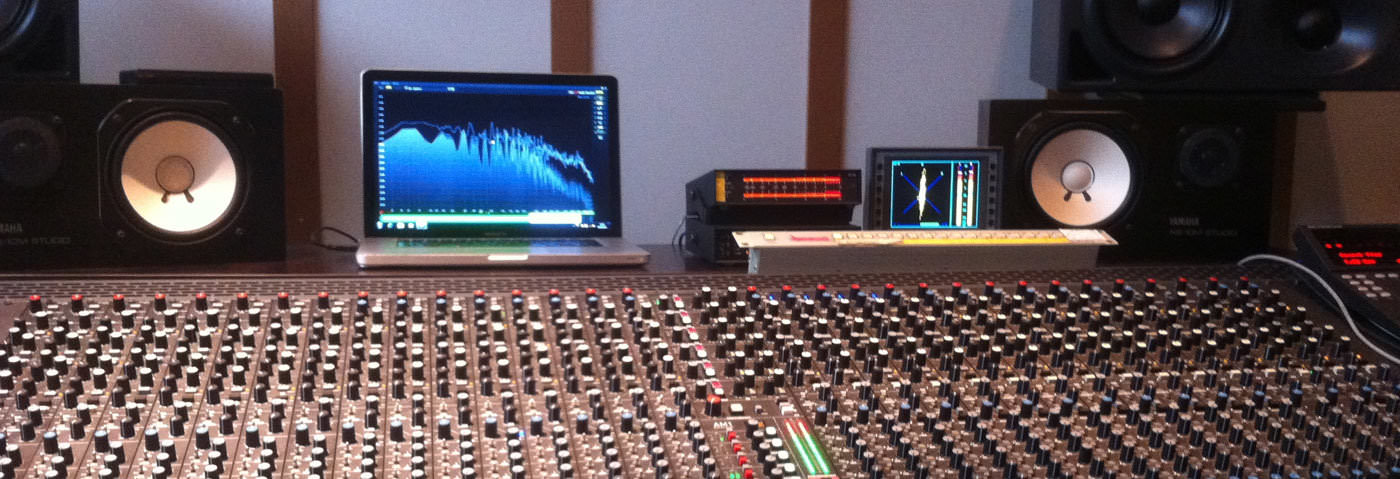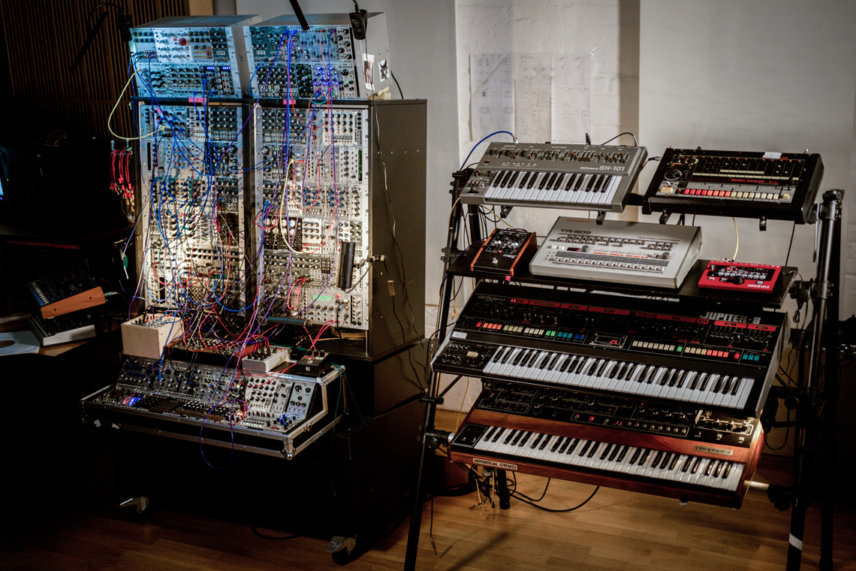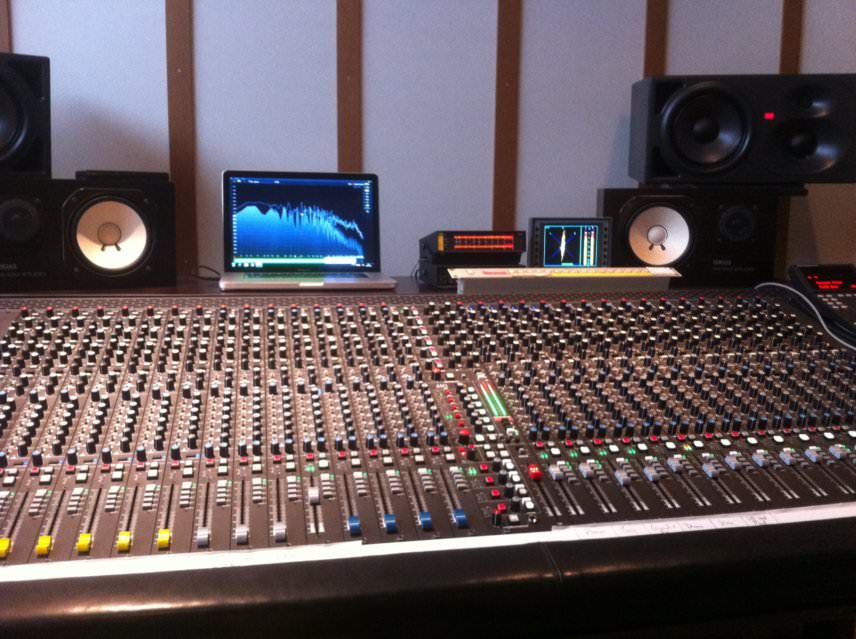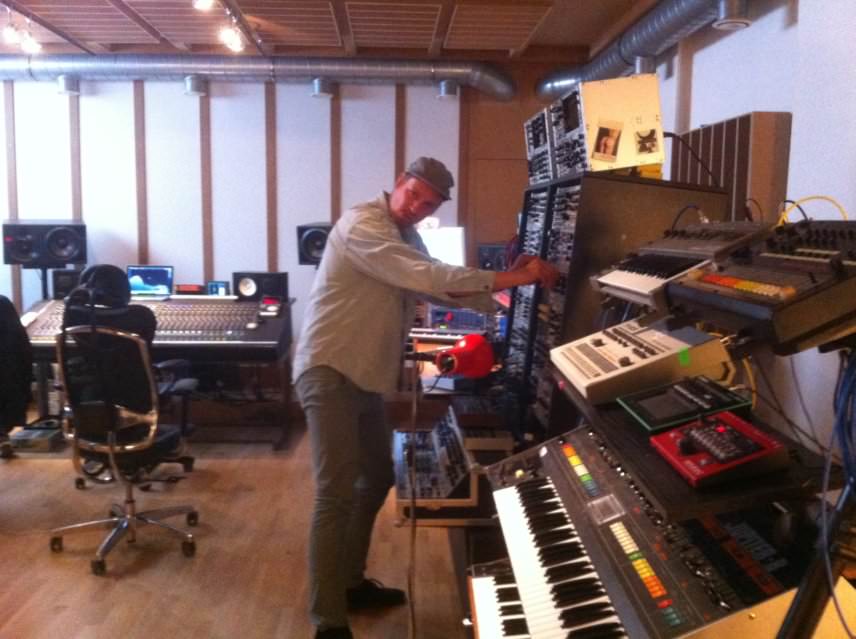The Berlin duo talk us through the making of their new album, LOOM.
Nayan Soukie and Fritz Windish provide a simple definition to explain the concept of their second album: “LOOM (noun): a hand-operated, power-driven apparatus of woven sound. Containing loops, synths and moods.”
The follow-up to 2013’s A Forest is an intricately woven affair, with carefully considered synth lines interlocking and treated with exquisite attention to detail. As the pair explain, the album was made in Ableton using a mixture of soft synths, hardware classics and modular gear. The album was then mixed down with Fadi Troit on a custom-made analogue console at Berlin’s Apollo Studios. The 54-channel Zähl AM-1 desk is a piece of art in its own right, developed by Basic Channel’s Mark Ernestus in conjunction with engineer Michael Zähl, whose career stretches back to building consoles for legendary krautrock producer Conny Planck in the 1970s.
We asked Nayan and Fritz to talk us through the making of the album, sharing some photos of their fantastic hardware setup and giving us some production tips along the way.

Fitzroy
The first track of the album is named after the district of Melbourne, where we stayed in an old fabric loft belonging to the rock band Jakubi during our 2015 Australia and New Zealand tour and started to work on the the first ideas of the album. Fitzroy has such a nice bohemian vibe to hang out – it’s slow and mellow, but at the same time vibrant, like the first synth line of the track.
We used a digital modular synth first to shape out the idea of the melody, but we felt the sound was not wide enough. In Apollo Studios in Berlin we tried out the Jupiter-8 using the same MIDI notes, and we fell directly in love with its warm and flying sound. The bassline here is played with the Prophet-5. For the compression on the album we used the Manley Variable Mu and the LA-2A from Teletronix. As reverb we were very happy to have access to an original analogue EMT 140 reverb plate, and we also played with the Bricasti M7 and the classic Lexicon 300.
This track shows directly what we like: melodic moods, pads, deep basses and always a little trippy glimpse. ‘Fitzroy’ starts with a catchy line and added strings, but then the psychedelic bells fade in and break it – this gives the track a nice unexpected turn towards minimal techno.
Jaglion
A jaglion is a hybrid of a jaguar and a lion. First you hear the groove of the savannah, then the jaguar steps in, elegant and mighty. The jaguar pads are played with the pulse engine synth Signal, a very powerful plugin made by the developers from Output. It contains two very different, high-quality sound banks: one bank with classical instruments, the other with synthesiser samples. You can combine these two sounds via a pulse engine and run this hybrid through step sequencers and groove patterns, plus nice global reverb and delay effects in the end.
The acid lion attacks the jaguar in minute four and they both fight over hegemony. The basic tone of the acid line is sampled from a ‘deep data’ library, then for the modulations we used the modular step sequencer Intellijel Metropolis and filtered it with the Cwejman MMF-2. It seems that the lion wins the battle, but in the end they make love and hunt together.
St. Tropitz
Again a hybrid name, made up from the glamorous resorts of St Tropez and St Moritz. St Tropitz is an exclusive club with 99 members. It was founded and named by the one-and-only playboy from Germany, Gunter Sachs. Like his life, this track is pure glamour: it glitters and screams for attention, drama, struggles, and in the end he becomes very humble and quiet.
The staccato groove of the synth is a simple combination of an Ableton Push controller and the Simpler device with LFO modulations on the filter shape. It’s nothing special but we love to play with the lfo in the Simpler. All the modulations of the synth hook are made with a digital synthesiser, Aalto, which was part of a collection from the German magazine Keys.
The weird sound design in this track is from Fritz – he always jams on the tracks and if if it fits we just press record. Because of this work practice, the sound design doesn’t get too perfect and develops a nice chaotic character. The track is also special for us because the drums are really dirty, shaped with an old Hungarian eight-track BEAG console, and the bass drum is not straight, which is not very common for our sound.
Cable Gardens
A track which already existed before we went to Australia. The chords are made with the Nord Lead 2 synthesiser. In the studio we used the Roland Dimension D chorus effect and Lexicon’s PCM 42 for delay effects, – the combination of these two tools makes the sound so much better, it sounds really classy now. The break is inspired by the typical cinema Dolby surround trailer. This is a little bit ironic also…
Head up my Dear
Life is a bitch. Every person struggles on this planet – some more physically, others psychologically. But our ‘first world problems’ compared to other agony is just so arrogant. The lyrics from Fritz want to point out that we should please stop complaining and rather take action. Bring some good energy back in the system, even if it is hard nowadays to stay positive. But remember: “life won’t last so long, soon all sorrow will be gone” anyway.
We made a video for this song, starring Fritz Windish, directed by Nayan Soukie.
For the recording of the vocals we used the comination of the Neumann M149, Amek 9098 and CL-1B, which clearly points out every detail of the voice. We could not have ever achieved this with our semi-professional recording stuff at our own studio. This is the first time we can put the vocals really forward and loud without loads of effects, because they simply sound so good. The bass and distorted sounds in the end are again the Aalto plugin. For the open flying pad, we used the Prophet-12, which we have in our own studio.
J.M. Zukunft
We stumbled over this old TV interview with Jim Morrison on YouTube. With his famous quote, he nails it… back to the future. This proves that he really was a visionary. The track tries to follow his speech: a bluesy and kind of rocky bassline ends with the voice from Jim saying “a lot of machines”, and then the track turns over towards techno with some analogue modular sounds from the Cwejman rack and Jupiter-8.
Blockchain
We decided to have a harder track on the album, to show that we have changed our sound a lot in the last two years. As DJs, we play much more deep driving techno in an experimental way. The album does not show the sound that we DJ at all – two different pairs of shoes and situations – but also our productions have changed lately.
‘Blockchain’ is in our opinion one of the best tracks on the album – it represents our style in a good way: strong and deep but often with wide pads, with unique ideas (in the best cases) and not too functional. We are bored by predictable arranged functionality, but the functionality is inevitable for a good groove. In this case the Manley Variable Mu compressor is a weapon that brings out this reduced groove of ‘Blockchain’ in a very nice and smooth way.
We really like the pad in this track. It’s made with one sample. Nayan often uses an arpeggiator without note steps, so that if you hold a key longer it automatically repeats the same note. In combination with a sampler, you can find unique pads in any sample by repeating a small part of the sound. These staccato sounds and pads are really interesting and you can find them in a lot of our productions these days.
Book of Disquiet
This track was originally planned just as an interlude inspired by the noise and ambient artists Koenraad Ecker from Berlin and Rutger Muller from Amsterdam. We sliced some of their sounds to develop the pads and the sound design. The bassline is played with Signal and drums are made with a 909 run through the BEAG console. The track was supposed to fade out without drums. But in the end the we tried a bass drum and it was just so good, we couldn’t resist doing it. We said: “Fuck the interlude and give it some techno.”
Dexters Vertigo
The last track of the album is also a farewell to old times. It’s inspired by the Ricardo Villalobos classic ‘Dexter’. The mood is really ghostly and melancholic. The storyline reveals a cold but sunny autumn day. Dexter is waiting for his girl, who is late again…
The delays are made with a Lexicon PCM 42, which makes the bass sound so ‘Dexter’-like. For the drums, we recorded also some 909 claps and hi-hats. This tracks also exists as a vinyl-only version on our EP cut from the album, which leaves out the string melodies and goes straight to the dancefloor. To listen to it, please go to your favourite record shop and put the needle down for real!
Soukie & Windish’s LOOM is out now on URSL. Find them on Facebook and SoundCloud.



